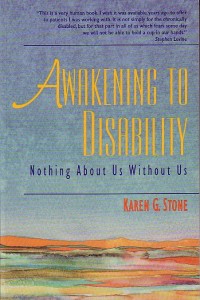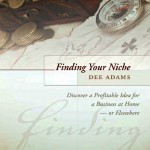Disability Quiz
How Much Do You Really Know?
Content adapted from Awakening to Disability by Karen G. Stone.
True or false?
1. Two-thirds of adults with disability wish to work but are
unemployed. Yet many are educated and qualified to work.
True or False?
2. Only 30 percent of women with disabilities work full-time.
True or false?
3. The most frequent age of injury is 19, according to the National Spinal Cord Injury Association.
4. 7 barriers are commonly confronted by the newly disabled.
What are they? Hint: Financial, architectural, and transportation are three of them.
5. The largest cause of trip and falls is
A. Poor coordination
B. Lack of medical checkups to detect hidden motor skills issues
C. Floor sills, steps, loose rugs, floor level changes
6. True or false?
Adapting a workplace for a person with disability cost on average $500 or less.
7. Teens are one of the largest groups of people who end up in
wheelchairs after a disabling accident.
8. True or false?
In the U.S., accessible housing is not often available because it
is costly to design and build.
9. True or false?
Able-bodied travel agents specializing in accessibility travel are an
often-overlooked resource for travelers with disabilities.
10. True or false?
Falls are twice as likely to cause disability rather than traffic accidents
11. True or False?
Trip and falling accidents are three times higher than injuries or fatalities from fire and earthquake evacuations.
12. True or false?
The Boston Globe recently reported that one in six doctors in the city refused to schedule appointments for callers posing as disabled patients in wheelchairs, according to medical researchers.
13. True or false?
One in four families has a member with a disability and one in five worldwide has a disability.
Answers posted at end of post
“You ask what can I do to be more compassionate, helpful person when facing someone within a disability?” Well, a little awareness of the multitude of barriers persons with disabilities is an enormous step toward understanding any disability.”
This excerpt from “Awakening to Disability: Nothing About Us Without Us,” by Karen Stone, courtesy of the publisher, Volcano Press.
To view and purchase this book: www.volcanopress.com
Answers
1. True
2. False, 12 percent or one out of eight women, according to Karen Stone in the chapter “Women and disabilities.”
3. True
4. The remaining major barriers are
A. Society’s subtle and overt paternalistic attitude, which directs counterproductive behavior toward people with disabilities…
B. Man made and natural. For example, certain building materials, new carpeting, cigarettes, perfume…
C. Communication…at times, unclear communication…
D. Myths or common beliefs about disability interfere with
effective social interaction and is the seventh barrier…
5. C
6. True
7. True
8. False
9. Nope, the author while traveling often encountered faulty
assurances about accessibility issues…
10. True
11. Six times higher not three…
12. True, according to news story posted last week on Boston.com
13. True, according to the World Health Organization
References
http://usdailyreview.com/most-unprepared-for-disabling-injuries-or-illness


